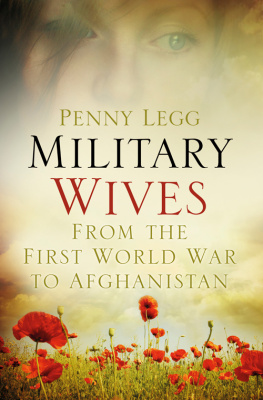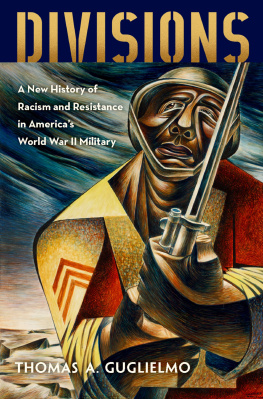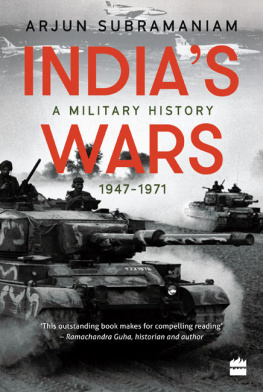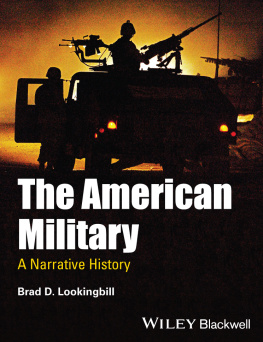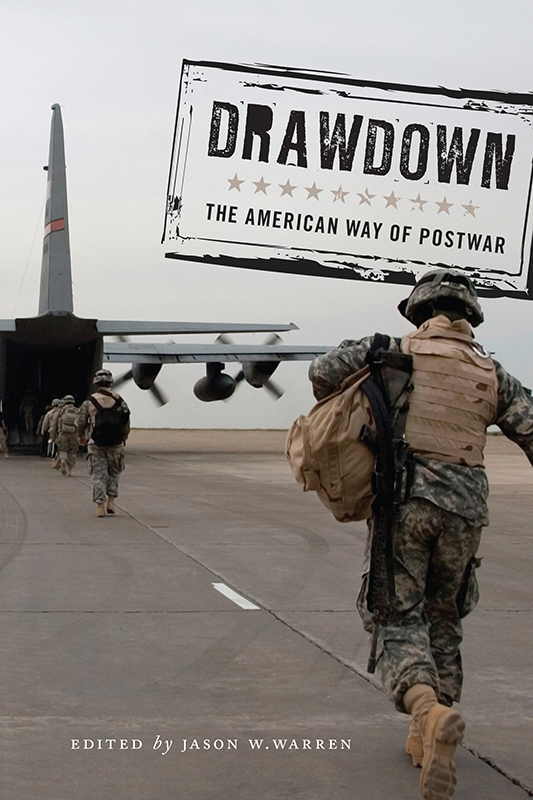
Drawdown
Warfare and Culture Series
General Editor: Wayne E. Lee
A Rabble in Arms: Massachusetts Towns and Militiamen during King Philips War
Kyle F. Zelner
Empires and Indigenes: Intercultural Alliance, Imperial Expansion, and Warfare in the Early Modern World
Edited by Wayne E. Lee
Warfare and Culture in World History
Edited by Wayne E. Lee
Rustic Warriors: Warfare and the Provincial Soldier on the New England Frontier, 16891748
Steven C. Eames
Forging Napoleons Grand Arme: Motivation, Military Culture, and Masculinity in the French Army, 18001808
Michael J. Hughes
Israels Death Hierarchy: Casualty Aversion in a Militarized Democracy
Yagil Levy
Under the Shadow of Napoleon: French Influence on the American Way of Warfare from Independence to the Eve of World War II
Michael Bonura
Controlling Paris: Armed Forces and Counter-Revolution, 17891848
Jonathan M. House
For Liberty and the Republic: The American Citizen as Soldier, 17751861
Ricardo A. Herrera
Drawdown: The American Way of Postwar
Edited by Jason W. Warren
Drawdown
The American Way of Postwar
Edited by Jason W. Warren

NEW YORK UNIVERSITY PRESS
New York
NEW YORK UNIVERSITY PRESS
New York
www.nyupress.org
2016 by New York University
All rights reserved
The views herein reflect those of the authors and not the Department of Defense or U.S. Army War College.
References to Internet websites (URLs) were accurate at the time of writing. Neither the author nor New York University Press is responsible for URLs that may have expired or changed since the manuscript was prepared.
Library of Congress Cataloging-in-Publication Data
Names: Warren, Jason W., 1977 editor.
Title: Drawdown : the American way of postwar / edited by Jason W. Warren.
Other titles: American way of postwar
Description: New York : New York University Press, [2016] | Includes bibliographical references and index.
Identifiers: LCCN 2016020572| ISBN 978-1-4798-2840-1 (hbk. : alk. paper) | ISBN 978-1-4798-7557-3 (pbk. : alk. paper)
Subjects: LCSH: United States. ArmyDemobilization. | United States. ArmyReorganizationHistory. | United StatesArmed ForcesDemobilization. | United StatesHistory, MilitaryCase studies.
Classification: LCC UA917.U5 D73 2016 | DDC 355.2/90973dc23
LC record available at https://lccn.loc.gov/2016020572
New York University Press books are printed on acid-free paper, and their binding materials are chosen for strength and durability. We strive to use environmentally responsible suppliers and materials to the greatest extent possible in publishing our books.
Manufactured in the United States of America
10 9 8 7 6 5 4 3 2 1
Also available as an ebook
For the men and women of the U.S. military who served their country during the wars in Afghanistan and Iraq.
Contents
Peter Mansoor
Michael E. Lynch
Kevin McBride with Ashley Bissonnette
Jason W. Warren
Samuel Watson
John A. Bonin
Edward A. Gutirrez with Michael S. Neiberg
Michael R. Matheny
Scott Bertinetti and John A. Bonin
Raymond Millen
Martin G. Clemis
Conrad C. Crane
Antulio J. Echevarria II
Richard A. Lacquement Jr.
Kevin W. Farrell
Peter Mansoor
The United States is currently undergoing a drawdown of its military establishment after nearly a decade and a half of war. The shrinking of the armed forces is not just an economic necessity but a historical inevitability. The essays in this volume explore the past experiences of the American military establishment during periods of contraction from the colonial period to the present. They detail the considerations that policy makers confront in determining how much capability and what types of it are required to keep America safe from harm against immediate threats, while providing the latent capacity to expand the military when national security demands such action. The trade-offs involved in right-sizing the defense establishment, underlain by an uncertain security environment and beset by inter-service rivalries, are not always easily reconciled. The need to get these decisions right makes the study of previous drawdowns imperative.
Americans have historically felt ambivalent about their military institutions. They view them as a necessary burden on society, but one that should be kept as light as possible both for reasons of economy and to prevent the standing military establishment from endangering civil liberties. Americans for the most part embrace the tradition of the citizen soldier as embodied by the militia and the National Guard. For much of the nations history, the Regular Army was relegated to remote frontier posts and coastal fortifications, its structure massively supplemented by volunteers to fight the War of 1812, the war with Mexico, the U.S. Civil War, and the Spanish-American War. The Navy, which was not nearly as much of a danger to civil liberties and which had a functional role in protecting commerce, traditionally enjoyed more support during times of peace.
The three great world wars waged by the United States in the twentieth century and the technological changes wrought to fight them changed this dynamic. The Atlantic and Pacific oceans that once served as moats to protect the nation could in the modern era act as highways in the service of great powers possessing modern navies. The advent of the airpower age left the United States potentially vulnerable to attack by intercontinental bombers and ballistic missiles. Americas acquisition of an empire also left its overseas possessions vulnerable, a point emphatically made by the Japanese attack on Pearl Harbor on December 7, 1941. These realities confirmed in the minds of many policy makers and military officers the need to maintain robust military capabilities even in times of peace. Although the large military establishments created to fight World War I and World War II were quickly dismantled upon victory, the Cold War with the Soviet Union and the strategy of containment crafted to hem in Communist power meant for the first time in the nations history the maintenance of a large peacetime military establishment. There were drawdowns following the Korean and Vietnam wars, but they were limited in comparison with the wholesale gutting of the military establishment after previous conflicts.
The advent of the all-volunteer force following the end of American participation in the Vietnam War reduced the societal burden of military service, but concomitantly made military forces more expensive. Thus the nation could afford fewer active-duty forces for a given expenditure, which in the post-Vietnam era has hovered between 4 and 6 percent of gross domestic product. Military leaders opted for the retention of combat capabilities at the expense of combat-service and combat-service-support organizations and robust headquarters, with significant damaging impact on the ability of the military to conduct the numerous contingency operations of the 1990s and beyond.
The end of the Cold War augured a reversion to the small military establishments that existed for much of the nations history. However, American policy makers had by then embraced Americas role as the global hegemon, the unipolar hyperpower that could keep the peace, protect the global commons, and make the world safe for the liberal capitalist order. A peaceful world bolstered by American power appeared to be good for the spread of democracy and the growth of American business. To be sure, the Clinton administration exacted a peace dividend, with defense budgets dipping below 4 percent of GDP in the latter half of the 1990s, but the defense establishment (and defense spending) remained much more robust than in previous eras following the end of major conflicts.
Next page


